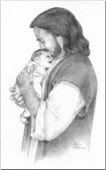Post by John on Mar 17, 2008 11:36:59 GMT -5
The Creational Theology of the Celts
Although the mists of history hide much about St. Patrick, this much we do know: He was not even Irish. He was born in Roman Britain and kidnapped by Irish attackers. After escaping captivity, Patrick returned to Britain and became a priest, and later a bishop. He returned to Ireland 30 years later and, despite the danger, witnessed Christ among the Irish, converting thousands.
As Thomas Cahill describes in his outstanding book, How the Irish Saved Civilization, these barbaric warriors “lay down the swords of battle, flung away the knives of sacrifice, and cast away the chains of slavery.” Not only did the Irish save civilization, their zeal for Christ certainly saved the Church in Western Europe.
As my colleague T. M. Moore wrote at BreakPoint.org, “The period of Celtic Christianity, which lasted some 400 years between the fifth and the ninth centuries, is one of the most fascinating and fruitful of epochs.” Particularly appealing, writes T. M., is the Celts’ “acute sensitivity to the revelation of God in creation.”
Many believers today do not go much beyond “the heavens declare the glory of God”—but we ought to, particularly in this age when everyone from population-control advocates to materialists worships the creation rather than the Creator. Here, studying the Celts’ “creational theology,” as T. M. calls it, gives Christians a place to bring truth into that conversation.
“Reading the works of Celtic Christians,” we get the impression, says T. M., “that if God is making Himself known through the things He has made, then we need to be studying those things carefully, in order to discover His glory, encounter His presence, and learn what we can.” And talking about God’s general revelation opens doors for conversations with those who might not talk about God otherwise.
Take the sixth-century Irish monk Columbanus, who evangelized much of Western Europe. He encouraged believers to “understand the creation, if you wish to know the Creator.”
A writer known as the Irish Augustine insisted that God brought creation into being so He “might reveal through created things all the vast goodness and power and benevolence which beforehand He possessed within Himself alone.”
And philosopher and theologian John Scotus Eriugena is considered perhaps the first proponent of “intelligent design.”
“Observe the forms and beauties of sensible things,” he wrote, “and comprehend the Word of God in them. If you do so, the truth will reveal to you in all such things only He who made them.”
Patrick himself, it is said, often used the things of creation to point beyond to the Creator. His use of the shamrock and its three leaves to describe the Trinity, even if it is legendary, is just one example.
You see, Celtic Christians showed us how to connect our faith with the physical creation. They showed us how to engage those who do not yet know God as we move about in this world, which reveals His glory.
So this St. Patrick’s Day, when friends wish you “the luck of the Irish,” tell them about the faith of the Irish—and what they had to say about the beauty of our earth and the beauty of its Creator.




 I was about to conquer the world but then I got distracted by something shiny.
I was about to conquer the world but then I got distracted by something shiny.




